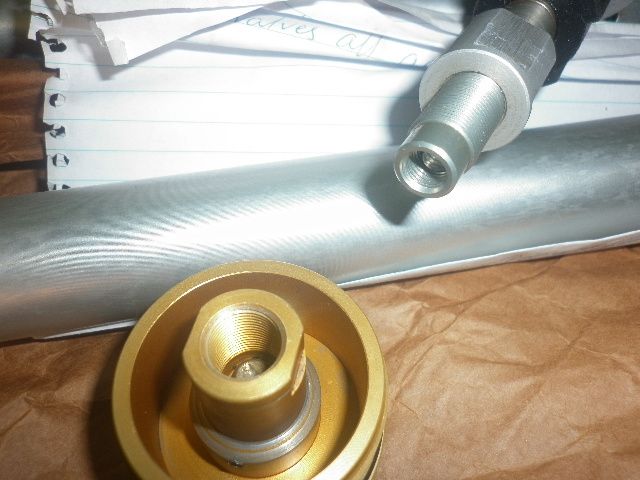So a few more pics. Doesn't really show anything that the other links provided don't though.
So remove cap, remove plastic spacer, ensure the locknut on the damper rod is threaded right back. Note that the damper rod has an internal thread - this is what the clicker threads into.
The clicker itself will most likely back out with the cap, or you can ensure it does like Steve (twowheels) mentioned earlier in the thread.
Applying pressure on the clicker with the screwdriver as above, the whole clicker will push out of the cap. You can see this clicker has different coloured threads.. I made the mistake myself first time through these forks. Can confirm what has been said that replacements aren't available. I ended up using silver solder and then retapped the threads.
And finally, a picture with the clicker sitting in the damper rod, no cap attached.
You can actually assemble the fork with the clicker in like this, and then lubricate the O-rings with a silicone grease and fit the cap over the top. You will feel the indents/clicks roll over as the cap moves over the clicker assembly.
The other methods as described by LT and SP work as well.
What doesn't work is trying to smash the cap on without confirming the clicker threads are engaged as well. You should be able to turn the cap on mostly by hand with little resistance if things are going together correctly.




